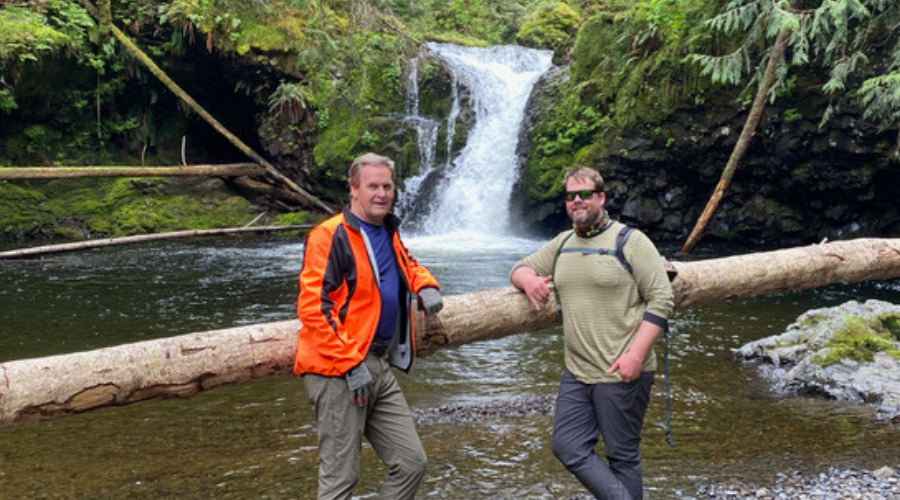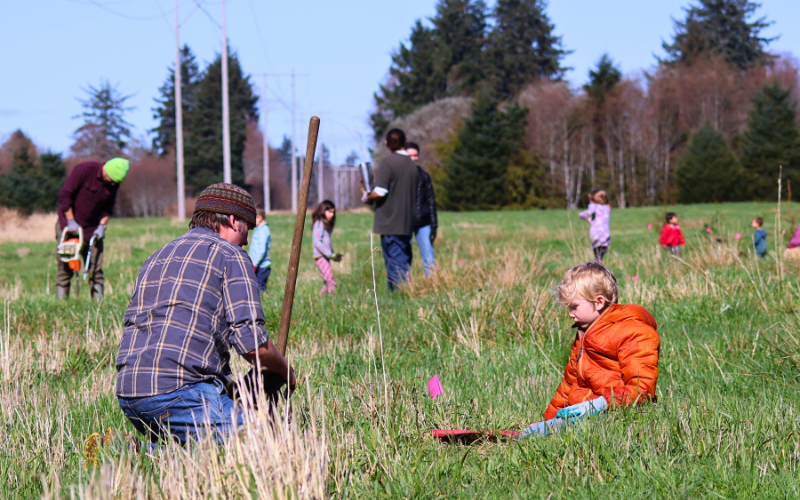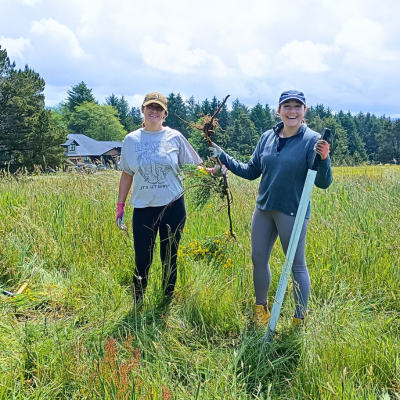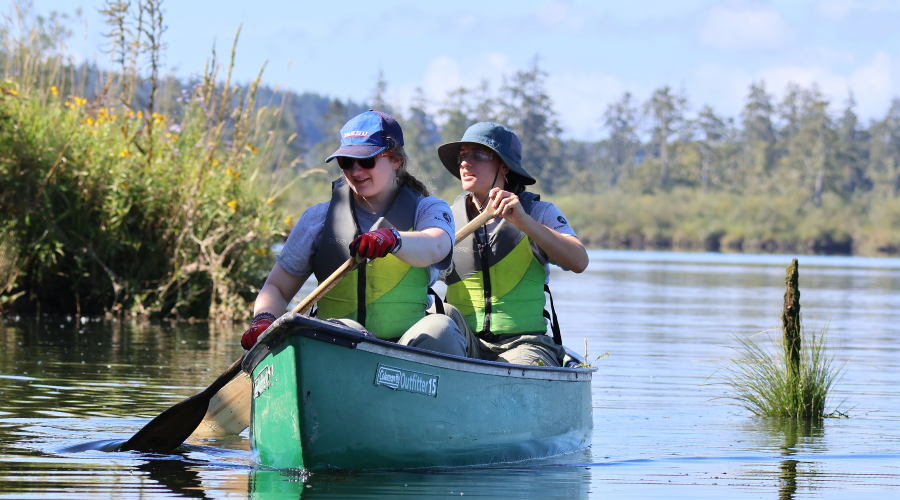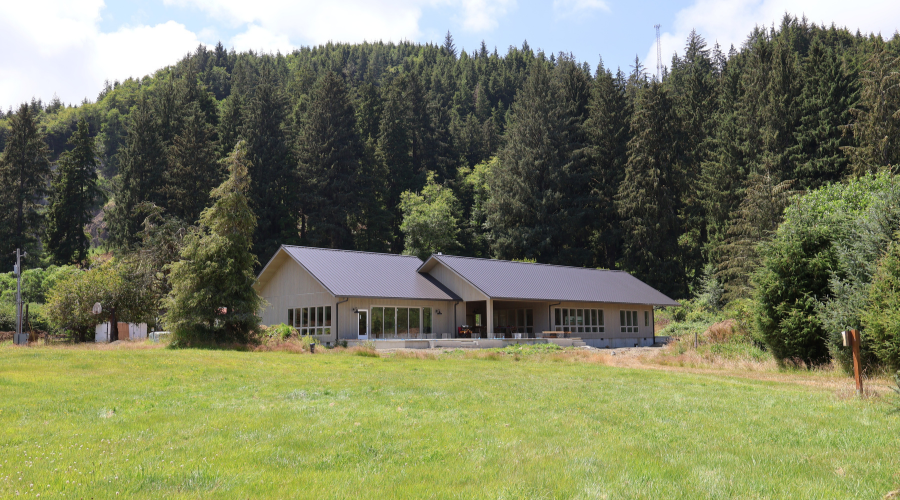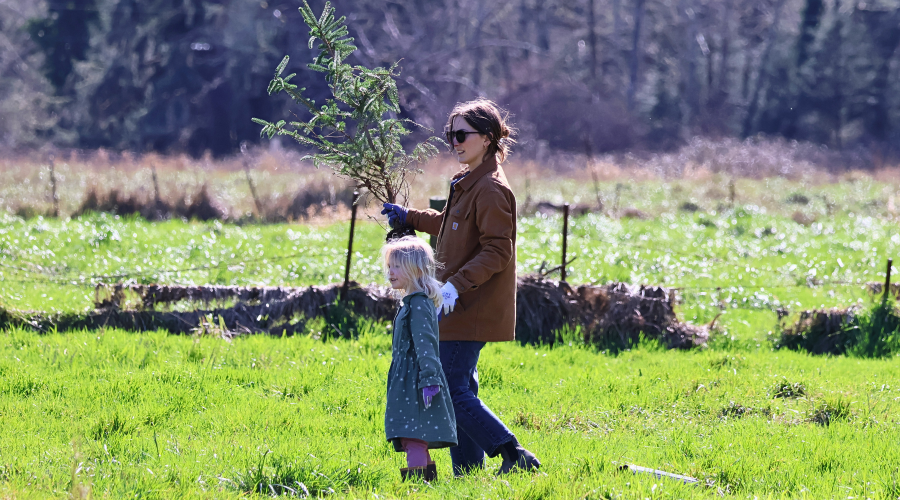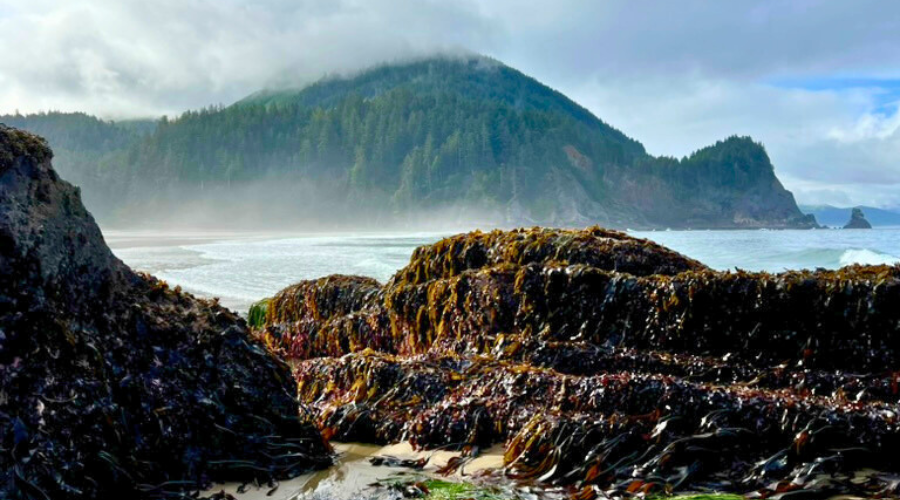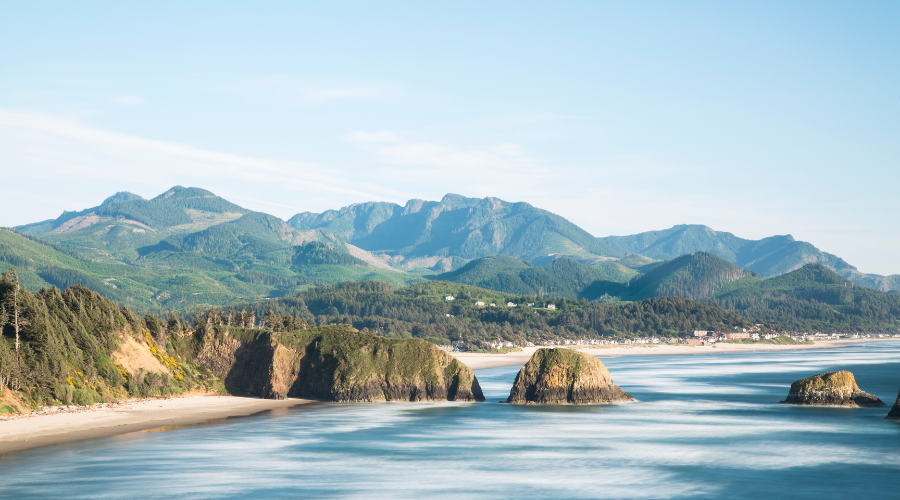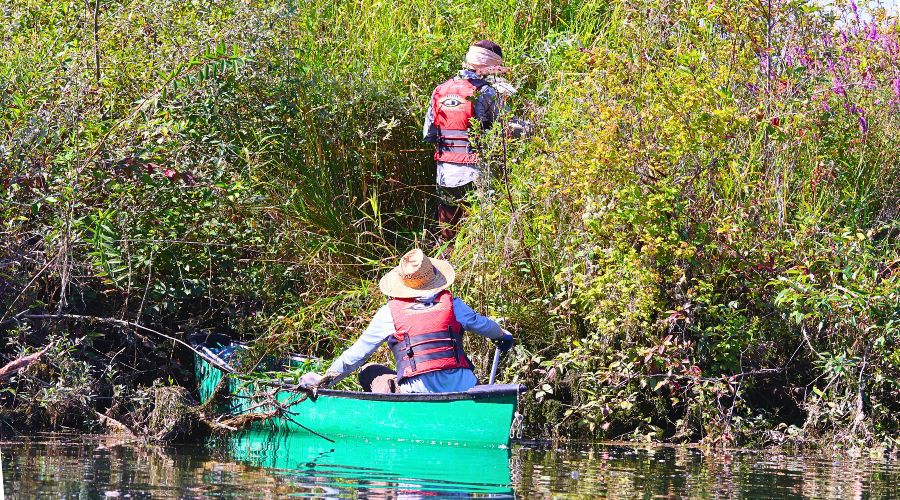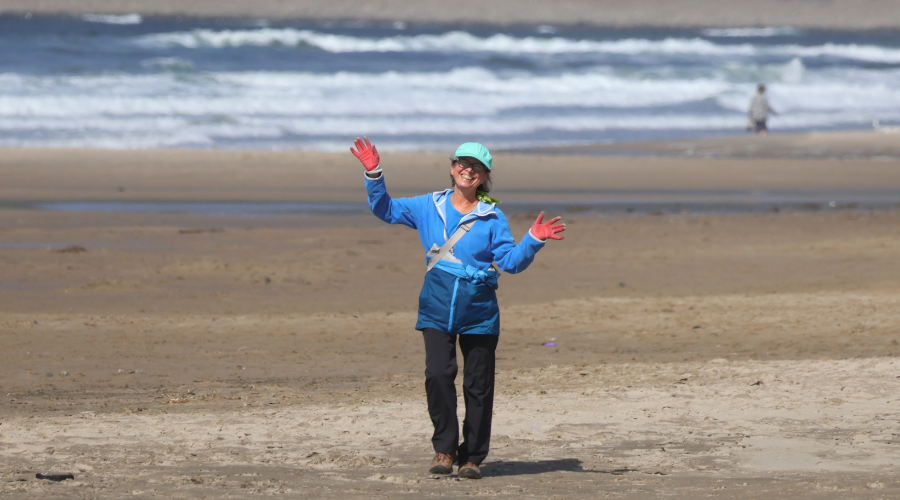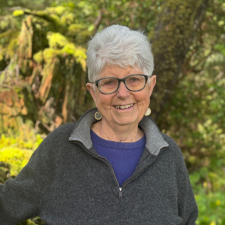Annual Report 2024
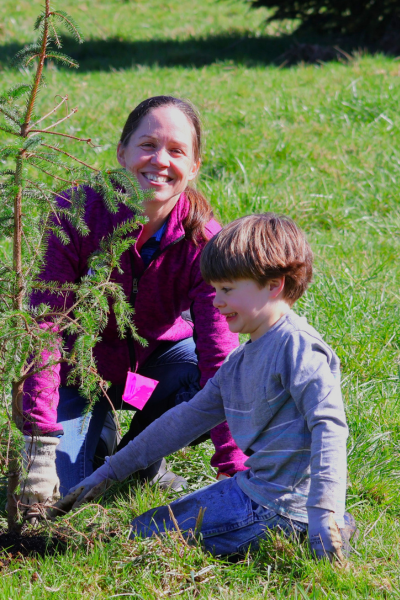
Building a Resilient Future Through Hope and Reciprocity
Dear Friends,
One of my fondest memories at North Coast Land Conservancy is when they gave me a nurse log as a birthday present the first year I started working here. That was 20 years ago! Who does that? Gives a nurse log as a present? Answer: Nurse logs. They give themselves.
In healthy and thriving forests, there is complexity. Old and venerable wisdom-keepers shelter and protect all while giving new growth something to reach for: the canopy. Young seedlings germinate among the mid-canopy and the old growth, sustained by the nutrients and richness of those who came before. And many seedlings get to grow up, rooted in a nurse log and nourished by them, protected by ancient growth, and encouraged by the healthy and thriving competition surrounding them. In coastal temperate rainforests, there is no forest without nurse logs.
I was a little seedling lucky enough to land on the nurse log of NCLC 20 years ago. We have all flourished together since then. And as I reflect on this past year, two organizational leaps that we have taken stand out to me. Thanks to the protective forested ecosystem of our community, they’ve felt smooth and natural, rather than insurmountable.
First, we built and moved into our new office and community center at Circle Creek Habitat Reserve. It was a 12-year journey, and the result is more splendid than we ever imagined. Tribes, watershed councils, marine artists, lil’ hikers, students, gardeners, and scientists are among those who have already benefited from the Community Room at Circle Creek and its surrounding habitat reserve.
Another is a hard shift for nonprofits to make. We instituted term limits for our board of directors and implemented a public board-recruitment strategy as a part of our plan for leadership succession and resiliency. Our board is extraordinary and has been the pillar of our strength for many years. Their ability to keep the mission and group consensus at the center is the ultimate standard for nonprofit governance, and it’s a huge part of why NCLC has succeeded in such great things as protecting the Rainforest Reserve, creating the Circle Creek Conservation Center, establishing the Neacoxie Wildlife corridor, and more.
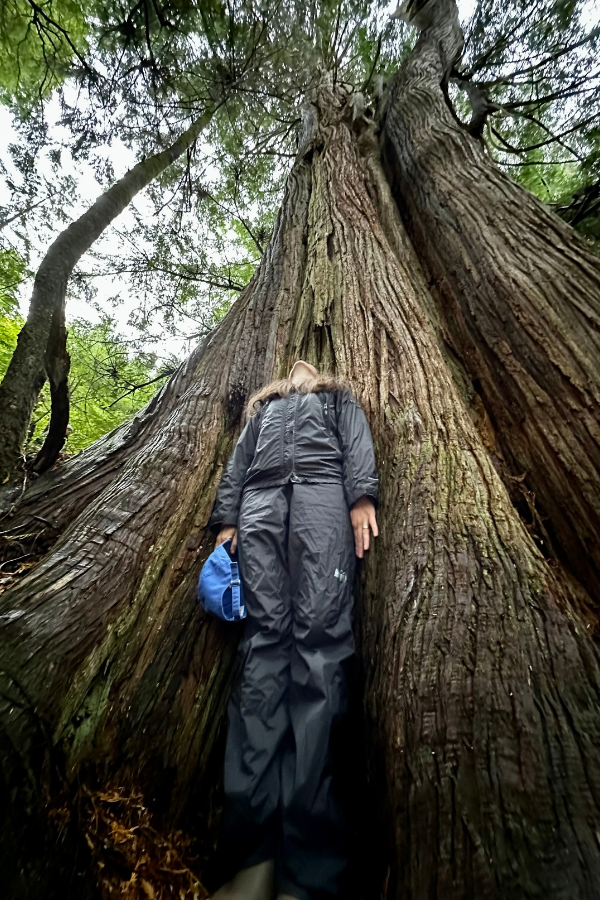
This summer, you’ll get to read the profiles of the five new board members who are joining NCLC—the seedlings on the nurse log of our wise elders. I’m grateful that our board will be a complex forest of leadership, ensuring innovation, wisdom, and resiliency.
I went walking in the planting area where we put the nurse log I was given many years ago. It was the first habitat restoration project I ever planned and implemented. It’s now a forest. I couldn’t find the nurse log, which made me a little sad at first. But then I realized it was because it worked. The nurse log nurtured the seedlings, providing them a foundation from which to grow, and they did, tall and wide. It’s not gone, the nurse log. It’s just not on top anymore.
It’s become absorbed into the complex ecosystem and its cycles, and will forever be a part of that forest. We should all be so lucky to have such a life and a legacy.
With love and gratitude,

Katie Voelke
Executive Director
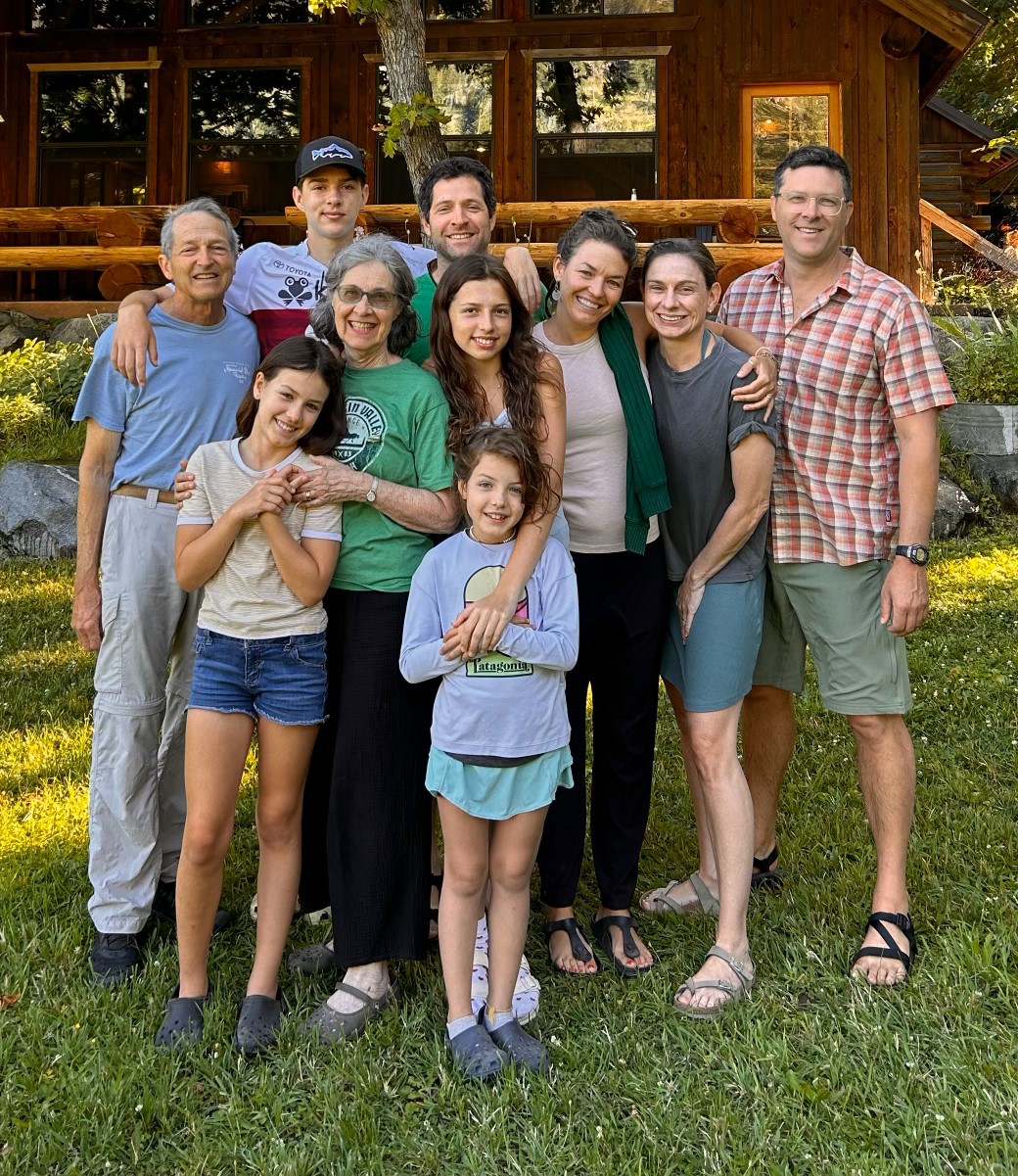
Creating a Ripple Effect Through Support of Conservation on the Oregon Coast
For Walt Mintkeski, there’s a sense of divinity to be found in the outdoors and the wilderness, especially in the Pacific Northwest.
“I’m continually awestruck by the mountains, the streams, the ocean—all the natural beauty,” he says. Every time he goes out to hike or ski, he thinks, “There has to be some kind of creative force behind this. It humbles me and restores me and re-creates me.”
“Being on the water and in the mountains provides that recreation that I need and that I think everyone needs,” he adds.
Walt grew up in Long Island, New York. On this 100-mile sand bar, he spent the summers of his childhood fishing with his father, poking around marine estuaries, and, in general, falling in love with water and its role as the life force of the planet.
He was a student at Yale University—obtaining a degree in science and general engineering—during the first Earth Day, held in April 1970. As a member of the sailing team, he was frequently on the Long Island Sound and witnessing the effects of water pollution. Addressing this issue became his passion and vocation.
His education took him next to Stanford University, where he completed a master’s degree in Environmental Engineering. He then took a job in Portland, Oregon, as a commissioned officer with the U.S. Public Health Service, which involved designing water and wastewater treatment systems for Native American reservations on the west coast of the Olympic Peninsula.
As soon as he arrived in Portland, he joined environmental organizations and started protecting the beautiful place he now called home. His activism in the local Sierra Club led to his becoming chair of the Oregon chapter when it was established in 1978. During a Sierra Club hike, he met Vicki, his now wife of more than 50 years. Together, they passed down their love of the outdoors to their children, Tyler and Charlie.
Meanwhile, Walt continued his work as an engineer and environmentalist, and helped found the Johnson Creek Watershed Council in 1995. Walt’s contributions—from donations to time and expertise—have greatly supported numerous nonprofit organizations, such as the Wild Salmon Center and The Nature Conservancy (TNC) of Oregon. In 2011, he was honored with TNC’s Lifetime Achievement Award.
He’s also involved in the advocacy side of conservation through groups such as Citizens Climate Lobby and Oregon League of Conservation Voters. A few of his primary passions include implementing energy efficiency, expanding solar power, and addressing climate disruption.
Walt Mintkeski, NCLC Supporter
“I’m continually awestruck by the mountains, the streams, the ocean—all the natural beauty. … There has to be some kind of creative force behind this. It humbles me and restores me and re-creates me.”
He became familiar with NCLC through his involvement with the Wild Salmon Center’s efforts to restore the Kilchis Estuary. He met with NCLC’s executive director, Katie Voelke, and learned about the organization’s projects.
“I was impressed by the work that this small organization was doing on the Oregon Coast,” he says. “I was especially enthralled by the Rainforest Reserve project.”
As NCLC made plans to rebuild its headquarters at Circle Creek Habitat Reserve, Walt stayed abreast of the project. He became particularly interested in providing funds for installing solar power at the Circle Creek Conservation Center to make the building more energy efficient and help lower energy costs, contributing 80% of the costs for the project. This was a chance, he thought, “to have a model solar project on the coast.”
“Let NCLC be the solar ambassador in the North Coast area—that’s my hope for that system,” he added.
However, Walt also understands the importance of contributing to nonprofits’ general operating funds, and not just special projects and programs.
“I like to make sure the organizations are funded and healthy so they can pursue the grants that they need for their projects,” he says.
As is often his goal, he also tries to use his contributions to create a ripple effect and motivate other community members to be more involved. Ultimately, in the face of these environmentally challenging times, his guiding principle is, “Just do something. Start somewhere.” He encourages people to be active in whatever way—small or large—that they can: attending a town hall meeting, writing a letter to a legislator, or donating to organizations working on pressing environmental and climate issues.
“It helps me look at my grandchildren and say, ‘I’m doing the best I can on this’,” he says. “That’s the least we can do.”


